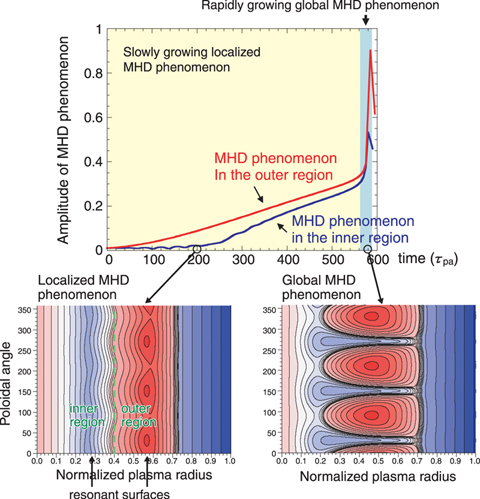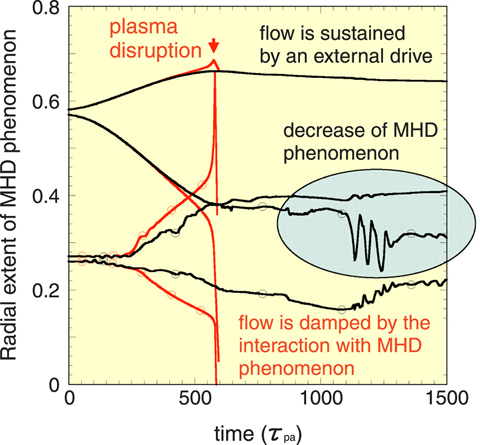
Fig.3-7 Evolution of the MHD phenomenon in advanced plasma

Fig.3-8 Avoidance of the low pressure disruption by the plasma flow in the advanced plasma discharge
Rapidly growing global magnetohydrodynamic (MHD) phenomena sometimes suppress plasma performance and damage plasma facing components in tokamak devices. It is an important research task to clarify the origin of such MHD phenomena and to find effective controlling methods. An advanced plasma discharge where the input power for the current drive can be less than in the standard plasma discharge is expected to be one of the ways to realize an economical fusion reactor. However, in these advanced plasma discharges, plasma disruptions occur in low plasma pressure regions more frequently than in standard ones. These plasma disruptions prevent realization of the advanced plasma discharge. The former linear theories could not account for the low pressure disruptions observed in the advanced plasma discharges. The low pressure disruption often has a slowly growing precursor seen before a rapidly growing disruption. Though these precursors can be utilized as a signal to predict the low pressure disruption, the causal relationship between them has not yet been clarified. In the present experiment, a series of phenomena were observed in the following order,
(1) A slowly growing localized MHD phenomenon appears at the outer or the edge plasma region.
(2) Rapidly growing global MHD phenomenon appears in a wide region including the plasma center.
(3) Low pressure disruption occurs.
In Numerical EXperiment of Tokamak project (NEXT), the plasma flow existing commonly in tokamak plasmas was focused on. The numerical simulation based on the MHD model including the plasma flow effect was executed in order to clarify the causal relationship among (1), (2) and (3). As a result, we found that experimentally observed phenomena of (1), (2) and (3) are not independent events, but one continuous phenomenon (multi-stage phenomenon) (Fig.3-7). The plasma flow plays an important role of preventing the information transfer between two regions divided by the plasma flow. In multi-stage phenomena found in this study, the originally global MHD phenomenon localizes around the outer resonant surface due to the screening effect of the flow. Such a localized MHD phenomenon, which is observed as a precursor, damps the plasma flow and extends between two resonant surfaces to trigger the low pressure disruption. Based on this finding, we propose searching for stage (1) as a precursor of the stage (3), and preventing the low pressure disruption in the advanced plasma discharge by maintaining the plasma flow (Fig.3-8).